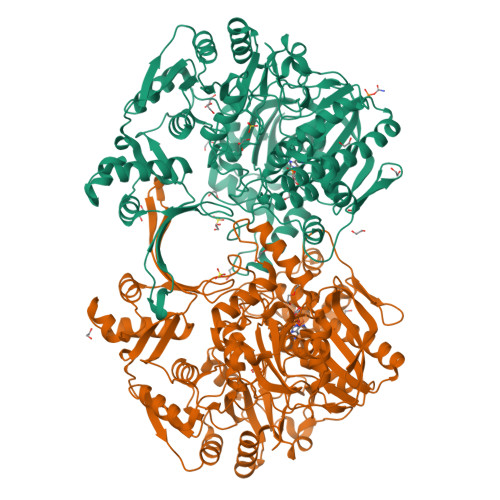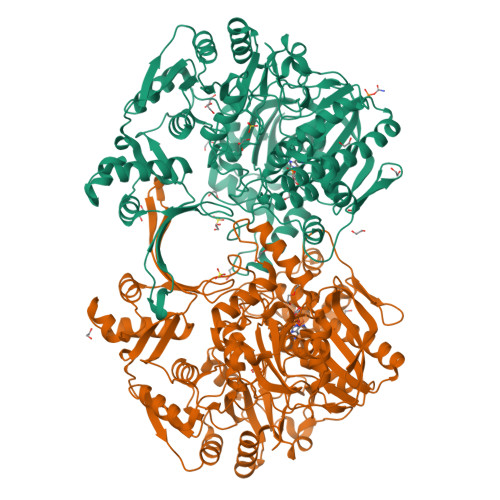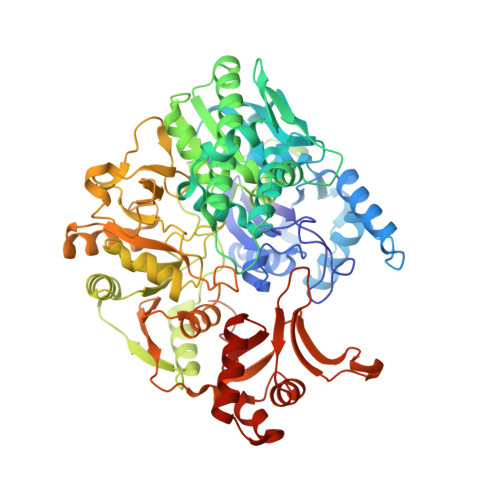Endowing homodimeric carbamoyltransferase GdmN with iterative functions through structural characterization and mechanistic studies.
Wei, J., Zhang, X., Zhou, Y., Cheng, X., Lin, Z., Tang, M., Zheng, J., Wang, B., Kang, Q., Bai, L.(2022) Nat Commun 13: 6617-6617
- PubMed: 36329057
- DOI: https://doi.org/10.1038/s41467-022-34387-2
- Primary Citation of Related Structures:
7VX0, 7VYJ, 7VYO, 7VYP, 7VZN, 7VZQ, 7VZU, 7VZY, 7VZZ - PubMed Abstract:
Iterative enzymes, which catalyze sequential reactions, have the potential to improve the atom economy and diversity of industrial enzymatic processes. Redesigning one-step enzymes to be iterative biocatalysts could further enhance these processes. Carbamoyltransferases (CTases) catalyze carbamoylation, an important modification for the bioactivity of many secondary metabolites with pharmaceutical applications. To generate an iterative CTase, we determine the X-ray structure of GdmN, a one-step CTase involved in ansamycin biosynthesis. GdmN forms a face-to-face homodimer through unusual C-terminal domains, a previously unknown functional form for CTases. Structural determination of GdmN complexed with multiple intermediates elucidates the carbamoylation process and identifies key binding residues within a spacious substrate-binding pocket. Further structural and computational analyses enable multi-site enzyme engineering, resulting in an iterative CTase with the capacity for successive 7-O and 3-O carbamoylations. Our findings reveal a subclade of the CTase family and exemplify the potential of protein engineering for generating iterative enzymes.
Organizational Affiliation:
State Key Laboratory of Microbial Metabolism, Shanghai-Islamabad-Belgrade Joint Innovation Center on Antibacterial Resistances, School of Life Sciences and Biotechnology, Shanghai Jiao Tong University, Shanghai, 200240, China.

























